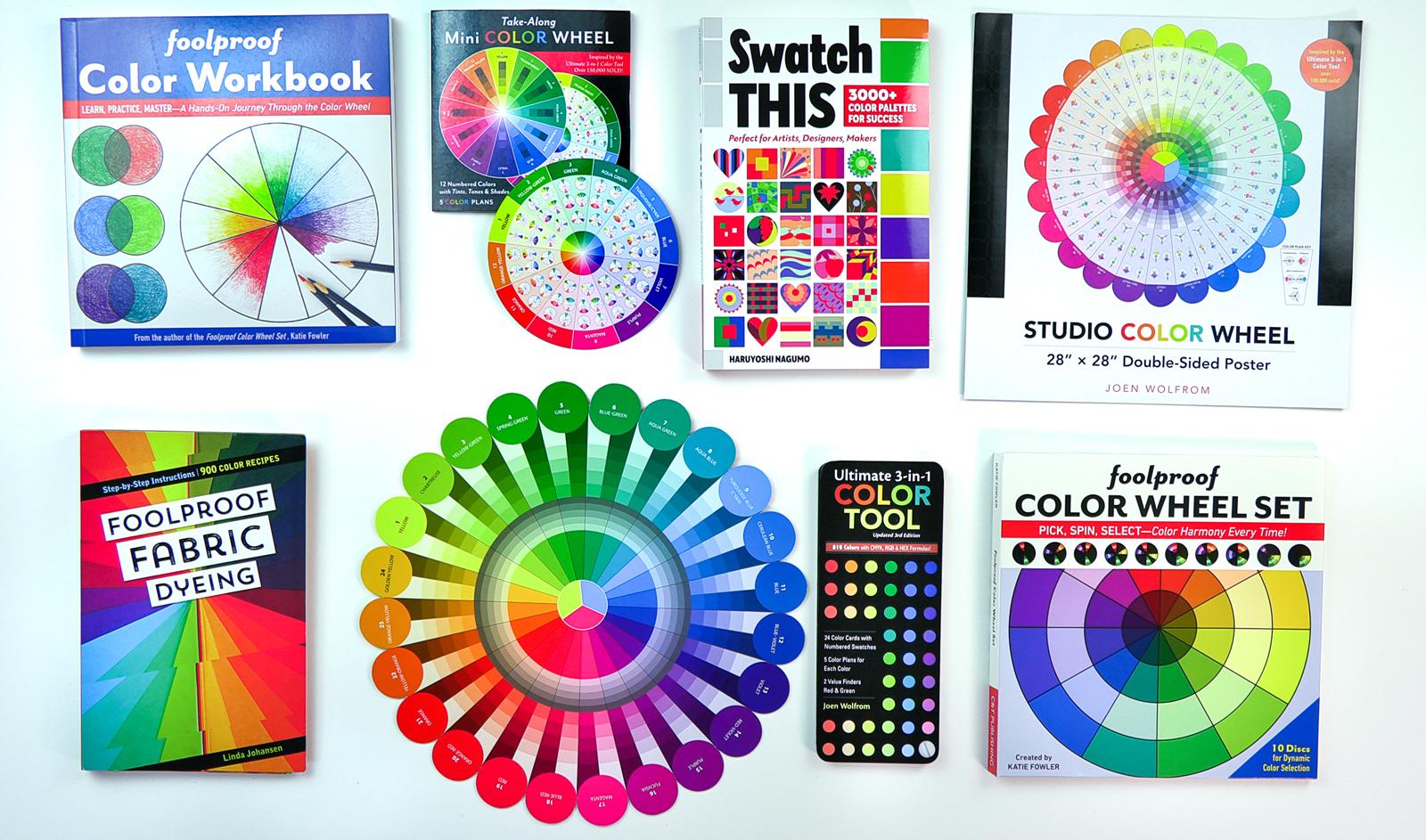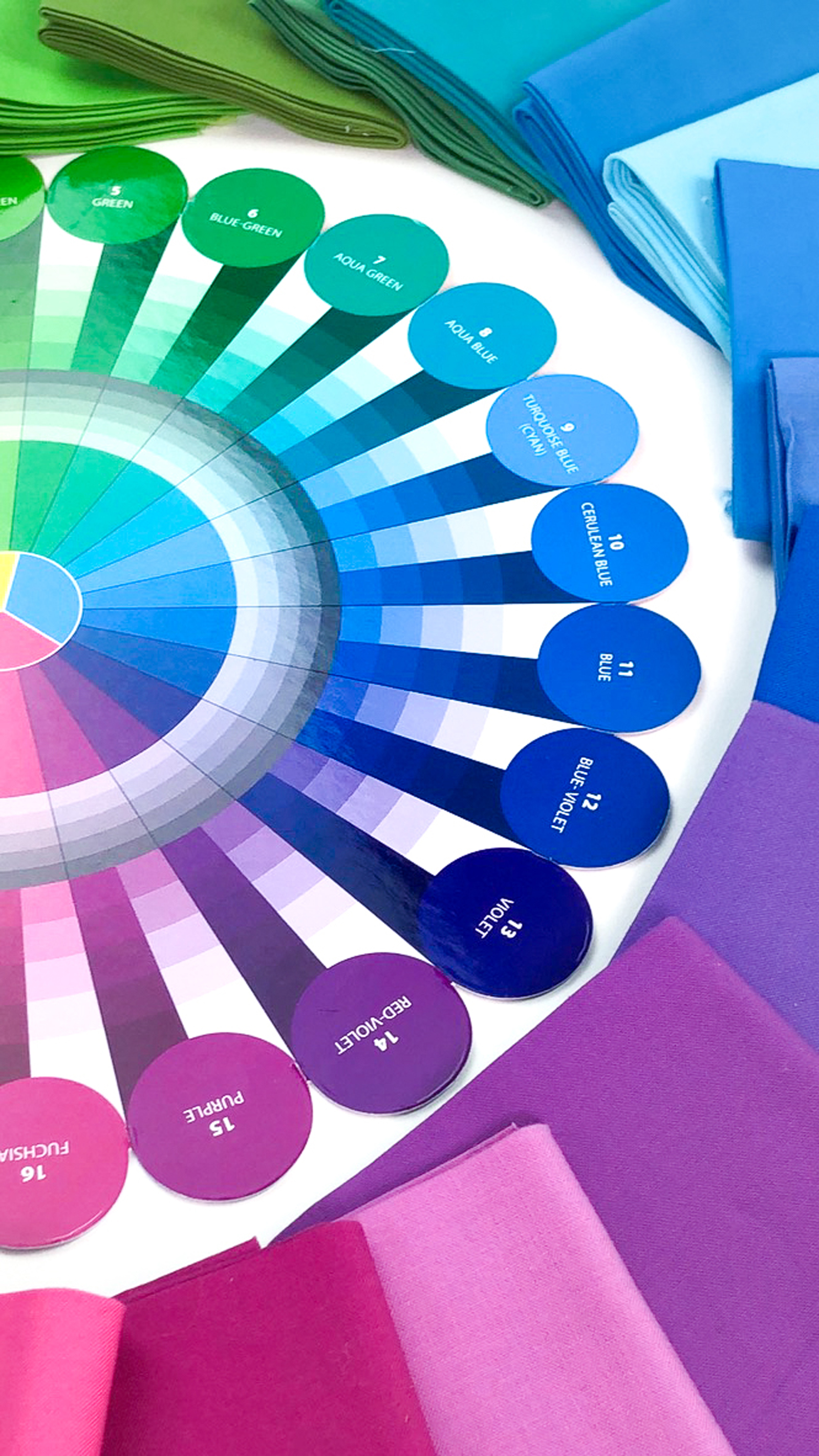Demystifying the Rainbow
Jul 15th 2022
Did you know that the color wheel is divided into 360 parts? Most of the time, you see a color wheel it consists of 12 or 24 colors. That means for a 12-color wheel, there are 30 colors in between, and for a 24-color wheel, there are 15 colors in between. The reason for 12 or 24 is that you get a great representation of all colors, and it’s easier to use. Here are some fun facts about color.
1. Ives Color Wheel and Primary Colors
The Ives Color Wheel, created by Herbert Ives, consisted of 24 colors and was designed for fabric printing using CMYK, Cyan, Magenta, Yellow, and Black. The first three are called primary colors. The Ives color wheel takes Cyan, Magenta, and Yellow and creates secondary colors, combine the primary and secondary colors, and you get tertiary colors. All this adds up to 24 colors.
A great example of the Ives Color Wheel is the Essential Color Wheel Companion.
2. Using Color to create Rhythm, Gentleness, or Accents
Playing with color is so much fun and can be overwhelming; some people love color play, and others dread it. You can build your color confidence by trying different color combinations. Try starting with your favorite colors, then add new ones until you find a pleasing color pallet. Just experiment! One great way to learn more about color is to check out Swatch This, 3000 Color Palettes for Success by color master Haruyoshi Nagumo; he teaches you about the psychology of color and how to use it to evoke emotion. You can use color to create rhythm and a repeating pattern. See how the Orange catches your eye and generates movement.
Or you can use it to create a calming, gentle design, one that combines other colors to soften the main color. See how the color Orange in this example is in harmony with the colors in the example.
And of course, you can use colors to create an accent, making your focus color stand out in the crowd of colors, to make a statement that says, “Look at me! Here I am.” In this example, he uses complementary colors to bring life to any design.
3. ROYGBIV
What does Issac Newton have to do with the rainbow? He was a curious fellow, and in his spare time, when not doing physics, he figured out that light, when it hits a prism breaks into seven colors Red, Orange, Yellow, Green, Blue, Indigo, and Violet. An easy way to remember this is ROY G. BIV. Newton first noticed this when the light was going through a window and then when the light was going through raindrops. He noticed that the colors were always in the same order, and he even figured out how to bend the prism to become a WHEEL! So next time you see a rainbow think about Sir Issac Newton! If you want to take a deep dive into color, check out Color Play Second Edition by Joen Wolfrom.
4. Tints, Tones & Shades
The great thing about color is you add White, Black, or Gray and get a completely different look! Want low volume? Add White. Looking for earth tones? Add Black or Gray. Using the Ultimate 3-in-1 Color Tool with over 800 colors, you can find pleasing colors every time. Start by selecting a color from the tool, and then you flip the card over, and you can see a selection of the tints, tones, and shades that are part of each color. Some of them will surprise you!
5. Create Your Color Wheel
Now it's time to create your color wheel! You can draw a circle with 12 wedges, get out your color pencils and start drawing or you can reach for the Foolproof Color Workbook by Katie Fowler with over 90 pages to color, all while perfecting your color confidence. You will create your color wheel and also play with combining colors to test out your favorite color plans.
6. Color Plans for Color Confidence
What is a color plan? It is a guide to combining pleasing colors successfully every time. What are the five color plans? Monochromatic, Analogous, Complementary, Split Complementary, and Triadic. A color plan takes the guesswork out of combining colors. Using these color plans will build your color confidence and help guide you through the color selection process. Here is an excellent example of a Triadic color combination featuring Green, Violet, and Orange. Looking for a tool to take your color skills to the next level? Check out the Ultimate 3-in-1 Color Tool!
Are you looking for even more inspiration? Here is a helpful video featuring some of our color tools on YouTube.
WANT MORE CREATIVE CONTENT? SIGN UP AND RECEIVE 30% OFF YOUR FIRST ORDER.













